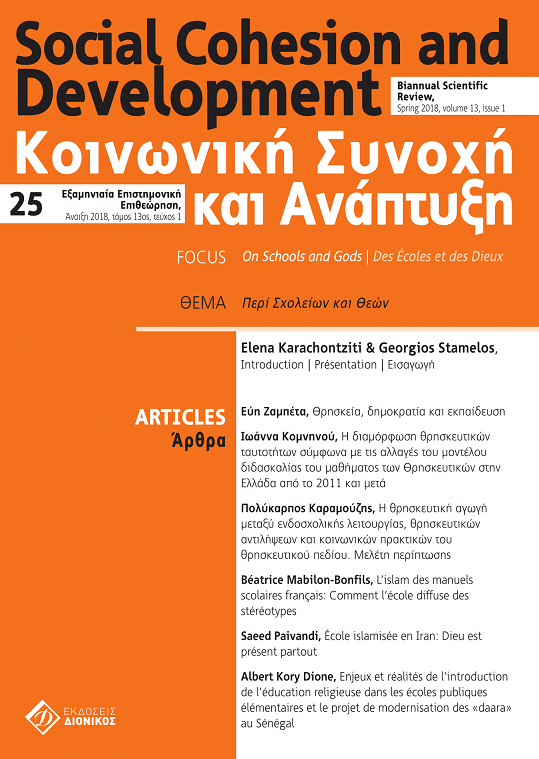Interdisciplinarity master programs in Greek universities: Οrganization and cognitive conditions

Abstract
This paper focuses on the development of interdisciplinarity
in the Master’s programs in Greek universities. For our analysis, we searched for tools from the Sociology of Organisations (Mayntz) and the Sociology of Science (Whitley). We argue that the University and its key
actors have adopted interdisciplinarity, firstly, as a means to increase institutional funding, and secondly, with care so as not to disturb the
internal institutional structure and the power relations between the key actors in the University. Indeed, on the one hand, universities, responding to the public calls for interdisciplinary programs, took advantage of the European support program for Greece in order to enrich their infrastructures. On the other hand, the new structures and functions (interdisciplinary Master’s programs) remain loose and weak. So the central role of the Department and laboratories remains intact. As a consequence, the internal relations of the institutional actors are protected. Thus, interdisciplinarity seems to be a low priority issue. However, it is interesting to consider that more than 10 years after the
end of European funding, the majority of these programs remains active.
Article Details
- How to Cite
-
Stamelos, G., & Aggelopoulos, G. (2018). Interdisciplinarity master programs in Greek universities: Οrganization and cognitive conditions. Social Cohesion and Development, 12(2), 85–99. https://doi.org/10.12681/scad.18956
- Issue
- Vol. 12 No. 2 (2017)
- Section
- Articles

This work is licensed under a Creative Commons Attribution-NonCommercial-ShareAlike 4.0 International License.
Authors who publish with this journal agree to the following terms:
- Authors retain copyright and grant the journal right of first publication with the work simultaneously licensed under a Creative Commons Attribution Non-Commercial License that allows others to share the work with an acknowledgement of the work's authorship and initial publication in this journal.
- Authors are able to enter into separate, additional contractual arrangements for the non-exclusive distribution of the journal's published version of the work (e.g. post it to an institutional repository or publish it in a book), with an acknowledgement of its initial publication in this journal.
- Authors are permitted and encouraged to post their work online (preferably in institutional repositories or on their website) prior to and during the submission process, as it can lead to productive exchanges, as well as earlier and greater citation of published work (See The Effect of Open Access).



